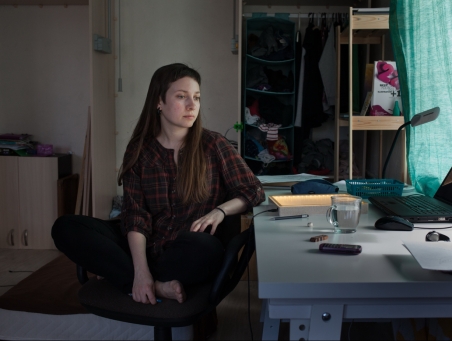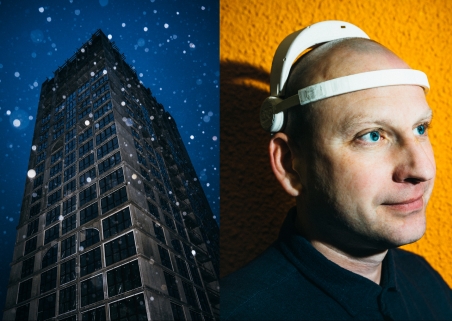Thesis 2: From the Obvious to the Sublime
Read all 7 theses on international photojournalism here.
 Thomas De Maizière offering an official press
statement about refugees. This picture is from the project "Rebordering .
Europe" by Kaveh Rostamkhani. See the full project here.
Thomas De Maizière offering an official press
statement about refugees. This picture is from the project "Rebordering .
Europe" by Kaveh Rostamkhani. See the full project here.
The immediate impact of classic photojournalism can reduce the often complex socio-political issues behind the imagery. However, the development of Web 2.0 has enabled new presentation formats which allow for more nuanced visual narratives aiming at a broader and more engaged audience, beyond the limits of narration traditionally imposed by magazine layouts.
The influence of visual media coverage on the current public debate on migration in Europe may serve as an example.
Uniformly sensationalist media coverage does not question the wider socio-political factors within the migration debate, such as the legitimacy of borders, border policy and the structural hegemonies beyond them.
The undifferentiated media coverage therefore legitimizes these factors, despite its claims to objectivity. Such coverage either criminalizes migrants as lawbreakers, without questioning the legitimacy of the law, or it romanticizes their flight as a “great adventure” and reduces them to little more than victims, while constantly failing to question the causes of their misery. As a result, migrants become targets of racist, nationalist and islamophobic discourses.
The challenge for photojournalists is to bring order to confusing situations and classify information by its significance instead of reproducing staged events arranged by powerful actors seeking to use the media for their own ends.
Photojournalism should present different perspectives on socio-political events, empower the underprivileged and raise questions in readers' minds.
This cannot be separated from presentation context since it is a substantial part of photojournalism. Web 2.0 scroll-essays can allow for a more dedicated visual auteur-narrative beyond the classic linear photojournalistic narratives. This can allow photojournalism to develop towards less obvious but more sublime aesthetics without losing its impact.
Kaveh Rostamkhani is an independent photojournalist. He is currently working on personal documentary projects. He also produces work for various magazines and NGOs.
Read all 7 theses on international photojournalism here.
The n-ost Media Conference Translating Worlds yielded five essays on the challenges foreign correspondents are facing today, as well as a series of seven photo-theses concerning modern photojournalistic practice. The complete works are available here:

